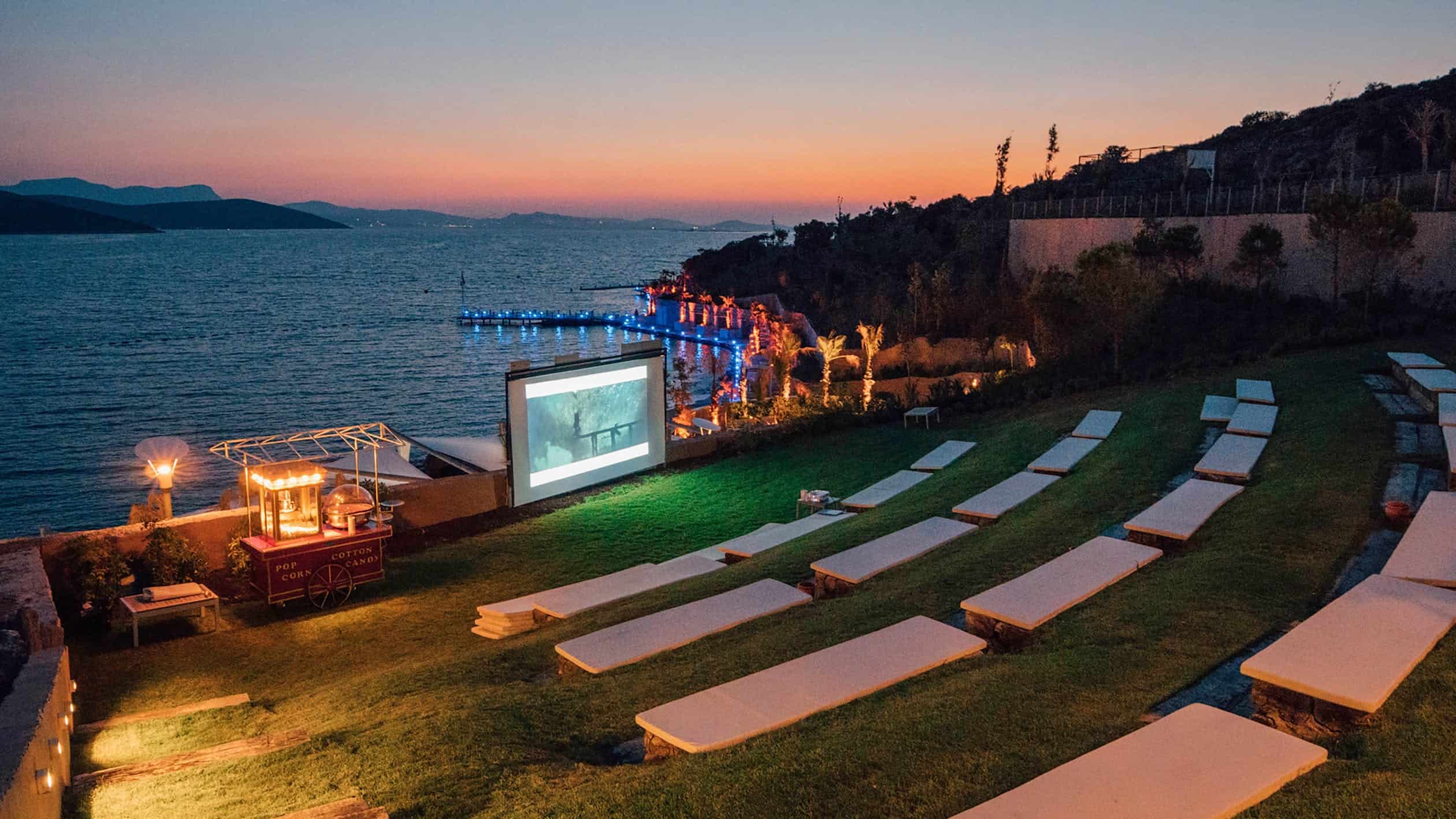By now you’re aware of my passion for the outdoors, but you probably didn’t know that I’m also a huge TV buff. Last summer I decided to finally merge my two hobbies and installed an outdoor plasma screen on my patio
I’ll be honest — nothing beats watching the game while simultaneously grilling out! However, having expensive electronic equipment outside can be stressful. If you’re not careful, rain showers and direct sun exposure can abruptly end your starlit movie nights permanently.
In order to fully enjoy your outdoor TV, you have to make sure that it can withstand the elements. Don’t worry, you can learn from my trial and error. I’m here to tell you how to protect your outdoor TV.
My strategy is two-fold: find a good location and cover, cover, cover. With just a pinch of careful planning and a few safeguards, you can increase the lifespan of your outdoor television.
Location
I completely understand the desire to place your outdoor television in the perfect spot. There’s probably a location on your patio at the center of everyone’s field of vision with the perfect amount of ambiance and sound resonance. However, you should also take into account the amount of coverage your spot provides you.
You should factor in three specific concerns when finding a spot to protect your outdoor TV.
Coverage From Direct Sunlight
Electronic equipment doesn’t hold up well in direct sunlight. Not only does the glaring sun wash out the color of the plastic, your television’s screen can be permanently damaged by prolonged exposure. Additionally, extreme heat will physically damage the screen and UV rays can cause the chemicals in LCD and plasma displays to deteriorate.
It’s important that you select an area on your patio that provides shaded coverage. Just like our own skin, the less direct exposure to sunlight throughout the day, the better.
Avoid Windy Areas
It’s unlikely that your outdoor television would disconnect due to heavy wind gusts (although it’s possible). However, wind can carry dust and other debris through the air. This dust and debris can find its way through cracks in your outdoor television set and make it look like the inside of an old computer. You’ve seen those, right? They can get majorly dusty.
As the dust collects, the airflow will naturally be obstructed. This can lead to overheating, reducing the lifespan of your TV.
Absolutely No Dampness
It’s obvious that water and electronics do not mix. However, you really want to scrutinize the area you place your TV and ensure there’s no obvious dampness in the area. The next time it rains, run your hand along the wall you’ll be placing your TV upon and make sure it’s dry to the touch. The best location is an area already covered by an awning or roof.
Buy Some Covers
Now that you have the location nailed down, consider purchasing an outdoor TV cover for additional weatherproofing. Sometimes all you need is an additional layer between your device and the elements. Outdoor TV covers are an easy affordable way to make that happen (seriously, they rarely cost more than $60 or so).
Do Outdoor TVs Need To Be Covered?
This depends on whether or not you’ve chosen an effective location. Outdoor TVs in ultra dry locations will not explicitly need a cover. However, if you have any doubt at all about the dryness of your area, I’d just go ahead and get one. It’s remarkably easy to find a high quality one online. I’ll include the model I purchased below.
Do Outdoor TV Covers Really Work?
For what I use mine for, absolutely. However, you should take note that they aren’t necessarily a silver bullet. You’ll still collect dust. Insects will find their way inside the cover. If water finds its way inside the cover, the weatherproofing can actually make the problem worse.
However, with some basic care you’ll not experience any problems. For example, clean it every few months or so. I simply point my leaf blower toward mine and wipe it down with a damp cloth (be sure to let it dry).
Cabinets Are Also An Option
If you’re looking for a permanent (if pricey) solution, installing a cabinet is the best way to protect your outdoor TV. A specialized cabinet for your patio can house your flat-screen, protect it from rain, and shield it from direct sunlight and extreme heat. Most cabinets contain sliding doors that lock, so you can even secure your television from theft.
There are various models available, ranging from standalone fixtures, to setups that mount to the siding of your house. However, they can cost more than a thousand dollars to buy and install. With TVs as cheap as they are, I’d be hesitant to spend this much to protect them!
There are two exceptions here where I’d recommend cabinets as an option:
- You have a very expensive television you want to protect.
- The aesthetics of a cabinet are your thing.
Don’t Forget Your Cables
While I’ve extensively covered different ways to protect your outdoor TV, I’ve omitted a major aspect that most people don’t think to weatherproof: the cables! When most cables are exposed to weather, they immediately begin to dry rot. This is a recipe for bad connections and even electrical shorts.
That’s right — improperly weatherproofed cables can be a safety hazard.
My advice here is to simply buy waterproof cables and cable protectors / conduits. Additionally, pay close attention when you run your cabling not to expose it directly to the sun. Not only will this help encourage you to keep your cabling organized, but it can increase the lifespan of cables dramatically. I don’t have any specific products to recommend here, but a quick search online should get you what you need.


